
federico b. la Divina Commedia purgatorio
Summary Welcome to the LitCharts study guide on Dante Alighieri's Purgatorio. Created by the original team behind SparkNotes, LitCharts are the world's best literature guides. Purgatorio: Introduction A concise biography of Dante Alighieri plus historical and literary context for Purgatorio. Purgatorio: Plot Summary

Canto 1 Purgatorio riassunto e analisi Studenti.it
Mostrata ho lui tutta la gente ria; e ora intendo mostrar quelli spirti che purgan sé sotto la tua balìa. Com'io l'ho tratto, saria lungo a dirti; de l'alto scende virtù che m'aiuta conducerlo a vederti e a udirti. Or ti piaccia gradir la sua venuta: libertà va cercando, ch'è sì cara, come sa chi per lei vita rifiuta.
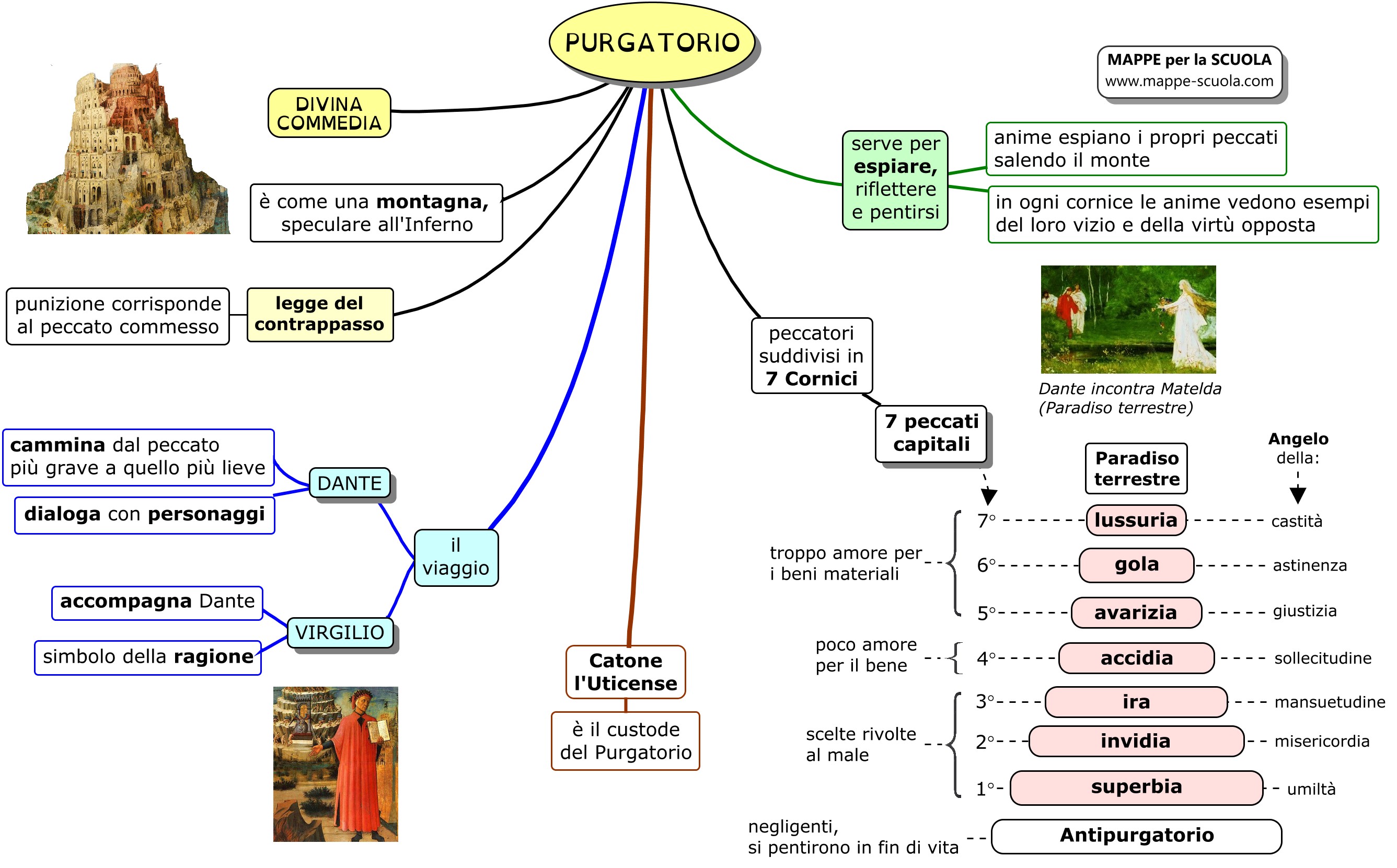
La Divina Commedia Mappa Concettuale Appunti kulturaupice
Purgatorio Canto 1 VIDEO VERSION Purgatorio, Canto 1 with Dr. Scott Moore Watch on AUDIO VERSION OVERVIEW Dr. Scott Moore is associate professor of philosophy and Great Texts at Baylor University and specializes in philosophy and literature, hermeneutics and philosophy of religion, with interests in the writings of Iris Murdoch and Wendell Berry.

Mount Purgatory 1 Clases de historia del arte, Dante divina comedia
Canto 1 Summary. With his guide Virgil, Dante leaves Hell behind and journeys into Purgatory, the "second realm where human spirits purge themselves from stain" and become worthy to "ascend to Heaven" (160). He invokes the Muses, inviting Calliope to "play her part" (160). As Dante emerges from Hell's "morbid air" that.

😀 Dante purgatorio canto 1. Purgatorio Canto II. 20190226
Inferno, Canto I. For the straightforward pathway had been lost. Which in the very thought renews the fear. Speak will I of the other things I saw there. In which I had abandoned the true way. Which leadeth others right by every road. The night, which I had passed so piteously. Which never yet a living person left.
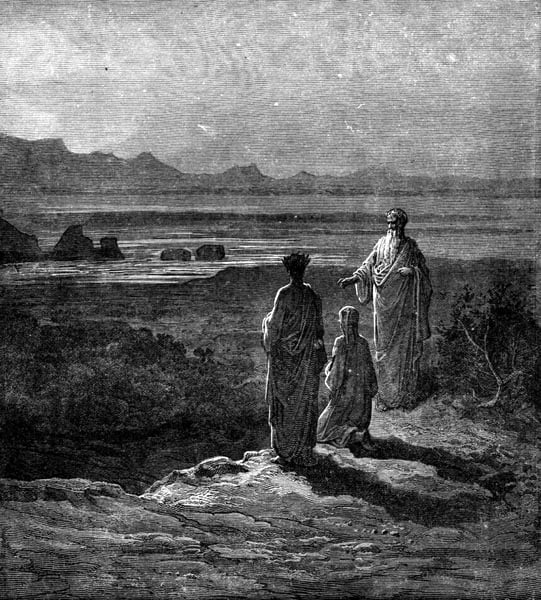
Purgatorio Canto 1. Riassunto e commento Studia Rapido
Cantos Commento Baroliniano Text & Translations Gallery Video The Sapphire Sea the theology of Purgatory: relatively unscripted compared to the theology of Hell and the theology of Paradise Dante enjoys carte blanche to invent his Purgatory: the very idea of Purgatory as a mountain is Dante's
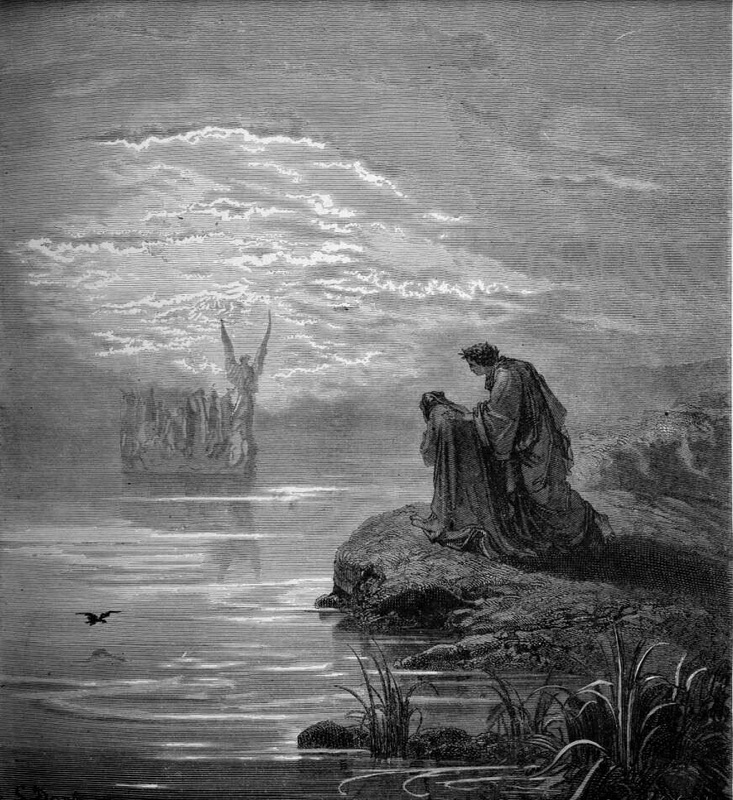
Purgatorio Canto II
Canto 1. Dante, having just emerged from his journey through Hell, arrives in Purgatory at dawn on Easter Sunday. With Virgil, his guide through the afterlife, he meets the soul of Cato, a pagan political leader who died in the first century B.C.E. Cato grants the two men entrance into Purgatory, and in preparation for the journey, Virgil.
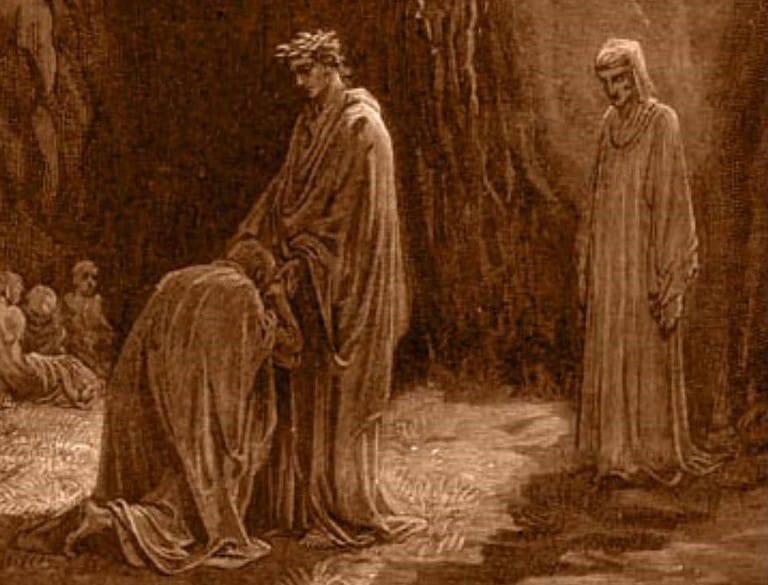
Purgatorio Canto 6. Riassunto e commento Studia Rapido
Purgatory Canto I. Having left Hell behind (as described in Inferno), Dante begins Purgatorio with a metaphor. He compares his talent/genius to a ship that now has the task of crossing kinder waters (than those of Hell) to a place where people are cleansed of their sins: Purgatory. After inflating his own ego, Dante proceeds to invoke the Muses.

Calaméo Purgatorio Canto Xxviii
Summary. Dante begins Purgatory by likening his mind to a ship in search of "better waves" after escaping the "gulf" of Hell. In this book, he announces, he will describe "that second realm / where some human spirits purge themselves from stain" in preparation for the eternal joy of Heaven. When he finishes his subterranean climb and reaches.

Parafrasi 5 canto purgatorio Testo Io era già da quell’ombre partito
"This present edition of the 'Purgatorio'. has been edited by Mr. H. Oelsner. who is responsible for the Italian text (based on the editions of Witte, Moore and Casini), and for the notes at the end of each canto. The English version is by Mr Thomas Okey. The Arguments have been written by the Rev. Philip H. Wicksteed, M.A., who has.
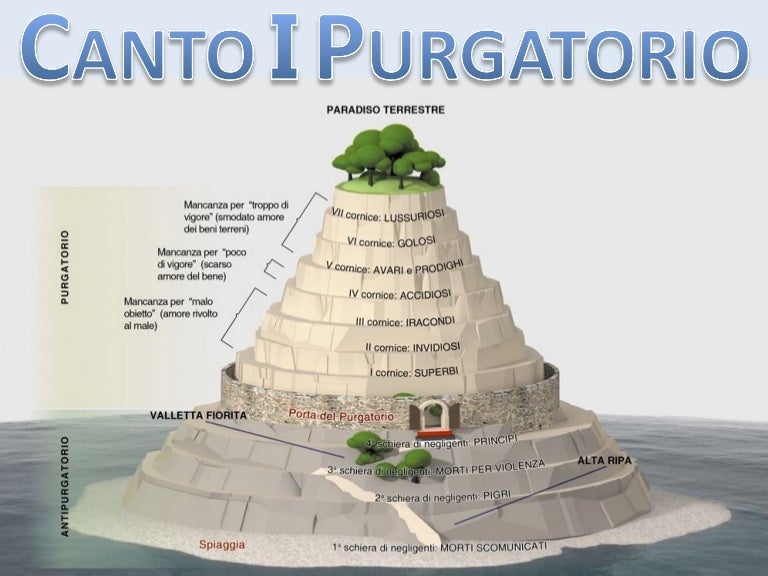
Purgatorio, canto I
Purgatorio: Canto 1 Summary & Analysis Next Canto 2 Themes and Colors Key Summary Analysis Having left Hell behind, Dante will now speak of Purgatory, the realm where souls cleanse themselves for Heaven. He invokes the Muses, specifically Calliope. After the darkness of the infernal realm, the blue skies above Purgatory refresh Dante.

Canto 4 Purgatorio di Dante testo, parafrasi e figure retoriche
v t Purgatorio ( Italian: [purɡaˈtɔːrjo]; Italian for "Purgatory") is the second part of Dante 's Divine Comedy, following the Inferno and preceding the Paradiso. The poem was written in the early 14th century.

Parafrasi Canto 1 Purgatorio
Dante's Purgatorio - Canto 1 Dante and Virgil emerge from Hell. They meet Cato of Utica who questions them. After Virgil explains their journey thus far, Cato sends them off to the shore so that Virgil can clean the dirt of Hell off Dante and bind him with a reed that grows there. (To read a footnote, click the number in the text.

Purgatorio Canto 1 Riassunto
This is the first appearance of the Roman poet Virgil, Dante's guide to the Inferno and Purgatorio. Virgil (70-19 BCE), best known for the Aeneid, was born is a village near Mantua and lived in Rome during the reign of Julius Caesar and, later, Augustus Caesar. Virgil, because he recounted Aeneas' journey through the underworld in the Aeniad, is an appropriate guide for Dante on the same.

Canto 1 Purgatorio di Dante testo, analisi e figure retoriche
Proemio della Cantica (1-12) La nave dell'ingegno di Dante si appresta a lasciare il mare crudele dell'Inferno e a percorrere acque migliori, poiché il poeta sta per cantare del secondo regno dell'Oltretomba (il Purgatorio) in cui l'anima umana si purifica e diventa degna di salire al cielo.

😀 Dante purgatorio canto 1. Purgatorio Canto II. 20190226
Summary and Analysis Canto I. In the middle of the journey of his life, Dante finds himself lost in a dark wood, and he cannot find the straight path. He cannot remember how he wandered away from his true path that he should be following, but he is in a fearful place, impenetrable and wild. He looks up from this dismal valley and sees the sun.